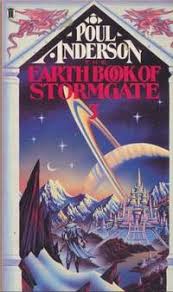The Earth Book Of Stormgate adds several layers to Poul Anderson's History of Technic Civilization.
First, the compilation of the Earth Book is itself an event in the History, occurring shortly after the Terran War on Avalon.
Secondly, the Earth Book itself informs us that it is a sequel to The Sky Book Of Stormgate. The Sky Book, which we never read, is about Ythrians whereas the Earth Book is about human beings, sometimes interacting with Ythrians.
Thirdly, before each story, we read the editor Hloch's introduction to it.
Fourthly, Hloch informs us about the authors of the individual stories: Judith Lundgren, A.A. Craig etc. James Ching narrates "How To Be Ethnic In One Easy Lesson" but Hloch informs us about Ching's later life and how his journal became accessible to the compilers of the Earth Book.
The inclusion of the Earth Book greatly enriches the Technic History.

3 comments:
Kaor, Paul!
Your comments here reminded me of Alexander Solzhenitsyn's huge "polyphonic" novel, MARCH 1917, which I'm finally getting seriously "into," after a slow start. Some might find it confusing, with its mix of alternating historical and fictional characters, interspersed with straightly historical chapters that reads like texts from works of history. The example I've thought of, Chapter 26, is about the last sessions of the State Duma, as the March Revolution was beginning. Showing both the faults of many of its members and how it could have had a much better role in Russian history, if so many had not been so blindly hostile to the Tsarist gov't.
So, Anderson's Technic series, quite accidentally, was also "polyphonic." With the "infodumps," which is a necessary part of good SF, giving us those "factual" passages.
Ad astra! Sean
Sean,
MARCH 1917 has got to be more multi-layered because it deals with real history as well as with fictional characters.
Paul.
Kaor, Paul!
And it is! MARCH 1917 is a huge, richly textured work best read rather slowly.
Ad astra! Sean
Post a Comment